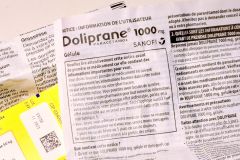A new symbol has entered the European intellectual property landscape: the ?. Like the ® for trademarks and the © for copyrights, since May 1 this circled D has enabled designers to indicate explicitly that a design has been registered with the European Union.
This change is the first major reform of Community design law in more than two decades, points out Irofi, a Belgian law firm specializing in intellectual property law.
Alliance France Design. It is accompanied by a series of measures aimed at modernizing legislation, simplifying administrative procedures and better integrating technological and digital developments.
A harmonized European acronym
The ? symbol is introduced by the new article 26a of the revised European regulation. It authorizes the holder of a registered design to display this marking on the product concerned. It may be accompanied by a registration number or a link to the entry in the European register. The aim of this new sign is to reinforce the visibility of legal protection and deter counterfeiting.
Up to now, product designers have used different terms such as RCD (Registered Community Design) or even the American copyright ©, for want of a conventional European sign. The creation of the ? therefore meets a demand from designers for a unified symbol that can be understood throughout the Union.
Graphic freedom for the logo and its supports
While the letter D in a circle is defined as the shape of the symbol, the regulations do not set any typographic standards. Instead, they allow rights holders a certain amount of latitude in adapting the design to their own charter or medium.
The possibility of using the symbol is not limited to the product itself, stresses Alliance France Design. Although the regulatory text refers exclusively to products, in practice there's nothing to prohibit its use on packaging, promotional documents or digital interfaces, as long as it concerns a registered design.
And new definitions in design law
The adoption of the ? symbol is part of a more global legislative reform. The vocabulary of design law is changing: "Registered Community Design" (RCD) becomes "European Union Design" (EUCD). In addition, a simplified fee structure has been introduced, with a single entry fee and higher renewal fees, according to the French trade association.
Definitions have also been updated. The notion of design now includes animations, movements and transitions. The notion of product includes non-physical elements such as digital interfaces and logos. The scope of protection even extends to objects produced by 3D printing.
Other new features: multiple requests are no longer constrained by the class unit, and a repair clause authorizes the use of spare parts for the restoration of complex products, under certain conditions.
A second phase within a year
The European Commission is planning a second phase of adjustments before the end of summer 2026. In the meantime, industry professionals are encouraged to adopt the new system, both in their products and in the software tools they use or develop.








